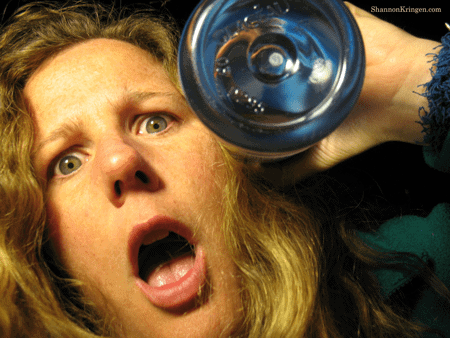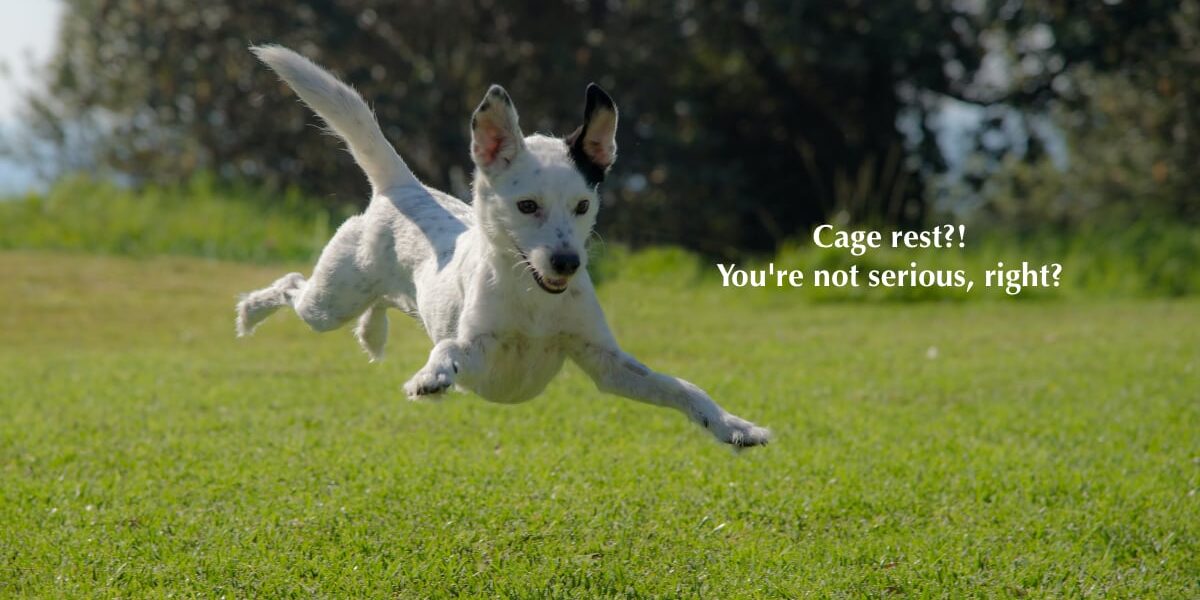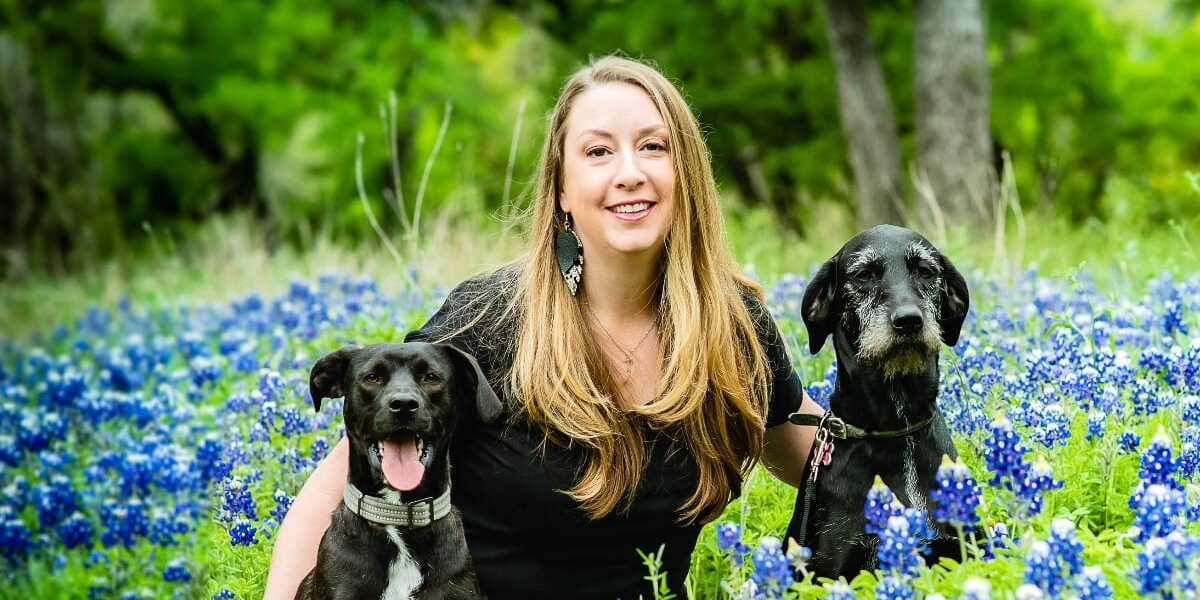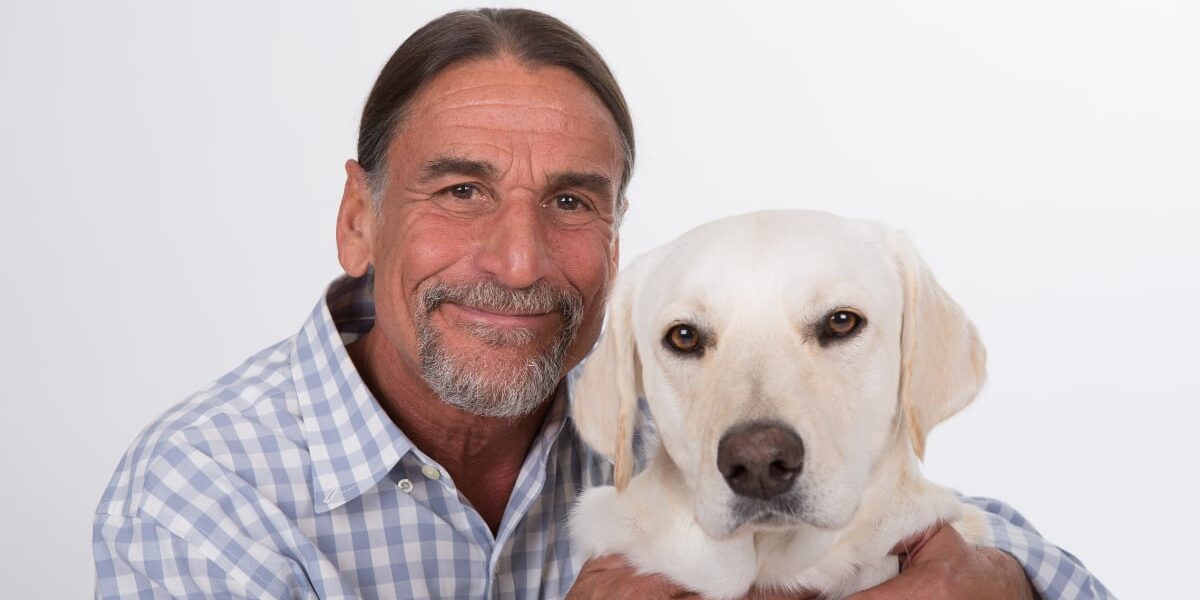Your Influence on Your Vital Animal
 Your interaction with and the quality of attention you give to your animal can add to or detract from your animal’s overall vitality. The quality of your mind and emotions shapes your animal’s mental and emotional world. Just one example is unknowingly rewarding inappropriate behaviors.
Your interaction with and the quality of attention you give to your animal can add to or detract from your animal’s overall vitality. The quality of your mind and emotions shapes your animal’s mental and emotional world. Just one example is unknowingly rewarding inappropriate behaviors.
The human effect on the Vital Animal. Probably something you want to put good, mindful attention to.
Exuberantly Dangerous
“Little” Beau came to see me the other day, a gorgeous, shiny Lab who I’d only seen once before when he was, in fact, little: nine weeks old. Now at 16 months old, he literally radiated good health, the lights in the room reflecting off of his coat. To say that he was excited to be here was putting it mildly. He leapt for my face, feet first, moving wildly, happily, uncontrollably. Once his leash was made apparent to him by Pat, who also caught his attention with a treat, Beau settled quickly to get his goodie. His apparent lack of control was now super focused on getting that tasty morsel.
“Oh, there’s more to this guy than a shiny coat and great vigor,” I thought. “Let’s see what else I can learn of this.”
As our appointment time moved on, I kept an eye on Beau, who I’d asked to be allowed to wander the room while I caught up on his past year of life. He’d vomited mucus a couple of times in the past five months, at an odd hour: 2-4 am. His eyes had a daily dot of mucus in the corners, and redness was not uncommon. If he had someone to ball play with him, he’d never quit unless the person did, though he’d egg them on to throw it again.
As his owners and I talked, Beau sniffed the shelves, full of food based supplements, put his nose to the floor to ascertain who’d been here before him, and pretty much ignored me.
Until I extended a friendly hand towards him.
Explosion! He was off the ground with his forequarters, coming for my face like a rocket, happy, excited and overwhelmed with the joy of a new chance for human contact. It seemed like nothing short of entering through my very skin would be close enough to satisfy his impetuous urge to interact with me!
Whoa! Pat once again took up his leash, got out a treat, and Beau was fully attentive to her. It was as if nothing else and no one else existed for him at that point.
Pat. Has treat. For me.
He showed amazing self restraint, not even wriggling with excitement. He was waiting patiently, obviously having been trained to do this very well. Once he got his treat, he was made to lie down, and complied easily to the leash’s direction.
Early Training Pays Off. Or Does It?
It came out in the course of conversation that Beau had spent some time away from Debbie and Pat for early life training. I’m wondering what form that took now. It seemed as though this eager dog may have had his game suppressed, maybe through harsh corrections, and he was now a tightly coiled spring who had to be constantly restrained in normal social situations to keep from causing mayhem.
At home with just his familiars, he could chill.
Fearful From Day One
Another of my patients is a dog named Charlie, a five year old Cockapoo. When I first met Charlie a little over a year ago, he really wasn’t comfortable with being examined, preferring to hide behind Jen, his owner. History taking revealed that Charlie was an anxious dog, bothered especially by reaching towards him, even by his familiar owners, but also by thunder and other noises.
By the age of two months, when he came from the breeder to Jen, he’d already received four rounds of vaccinations (!), and was “anxious from the moment we brought him home.” And, not too surprisingly if you’ve followed along with the “vaccines cause allergies” story line that I share with many of my holistic vet colleagues, Charlie came home with double ear infections. At 8 weeks of age!
What’s wrong with this picture?
Jen and I worked together on Charlie’s recurrent allergic ear problems, diarrhea, restless nights, phobias, and, in the end, made only moderate progress, sometimes quieting his ears, keeping his GI system pretty well, but never really getting his anxiety sorted.
Some months went by when I didn’t hear from Jen and Charlie until a strange emergency arose. Charlie had been let out in the wee hours of the morning in February, and somehow, through miscommunication, was left out for hours. When he was discovered and brought in, he slowly but steadily went downhill, and seemingly appropriate remedies had little to no influence on his state. He’d tremble, had a poor appetite, sometimes vomited after eating, sometimes had diarrhea with the vomiting, seemed nauseous, lost his thirst, in short, he was really crashing, slowly but surely.
As remedies seemed unable to shift him, I sent him to a colleague in town for diagnostic work, and Charlie, at five years old, was diagnosed with Addison’s Disease, the dangerous subpar functioning of his adrenal glands that left him unable to cope with stress the way a normal dog would. His electrolytes were seriously out of the normal range, he needed two kinds of steroids to regain his place in the world of the living, and he’s not taken well to weaning off these drugs recently.
What happened here?
The adrenal glands are the most important glands in the body for helping us all deal with stress, humans and animals alike. Charlie’s stress had been going pretty much non-stop since before he came into his loving home, not ever fully able to let down his guard even when offered affection from his familiars.
What happened in his place of origin to account for this life time of anxiety? We will likely never know, but it’s become obvious as Jen and I discussed Charlie’s case that what ever it was shaped his life.
In both cases, I suspect training had an impact in these dogs, whether it was explicit, like using “correction” collars, or implicit, the subtle messages that told a pup he was not safe. Who knows, Charlie might have been taken from him mom too early and resented for being one pup too many by his breeder.
Worry as a Negative Emotion
Another problem I run into in trying to cure patients is worry on the part of the owner. Worry over a symptom that crops up, worry over a missed meal, worry over a fussy appetite, worry about giving a remedy that could stimulate a reaction to push out the chronic disease.
Part of this stems from humans being raised to incorrectly view symptoms as disease, which has been common in our society for the past several generations. As a culture, the first world Westerner especially has lost sight of symptoms being made for a reason, that there’s an intelligent life force behind them, trying to right an imbalance. Just like we’ve feared death and institutionalized it, we fear symptoms of illness, even though they are valuable sign posts of a fight being waged. Professionals in the medical field often get quite hung up over the “numbers game,” seeing lab values or temperature readings that are abnormal and aiming to “bring those numbers down” instead of looking at the patient as a whole.
Imagine a pet, or a child for that matter, living life with a constantly worrying parent. Doting on his every mouthful, clucking at each stool that seems a bit out of sorts, scooping up the little dog who’s got a wagging tailed visitor wanting to rub noses with him. What can the interpretation be in the animal’s mind?
“Life is not safe. My owner is constantly uptight and upset around me. Am I the cause of this? Who’s my protector if not her? This pack is not a safe family unit.”
When I hear clients worrying over my patients that I’m trying to cure, I try to gently explain that their energy will be far better spent at observation, careful sorting and noting of symptoms and watching for those that recur or come under certain circumstances.
“Your animal is talking to you,” I say. “I need your calm, collected observations to tell me about this symptom talk, so I can find the best homeopathic remedy to cure her.”
Too liberal parents create the same stress in children that too uptight ones do. “Oh oh. No one’s in charge here. I guess I need to be,” says the 7 year old to herself. Being ill equipped to take charge, untold stress and behavioral problems ensue as she grows in dysfunction.
Recognizing Our Roles
A client recently revealed to me that she thought her own emotional challenges mirrored those of her dog. Might they be contributing to the illness her dog is going through?
I affirmed this could well be the case. We discussed her sharing the Bach Flower remedies I’d sent for her dog to take.
My own homeopath is a vet first, but also takes human cases, and sees the family unit improve when she finds remedies that work for both animal and human. Sometimes, it’s even the same remedy!
A quite common behavior I see in dogs is leash aggression. The dog, being in a social situation, lunges at the dog walking by in the opposite direction, or rears up angrily at the dog at the park coming over to exchange sniffs, tail wagging. I often try to ascertain whether this same behavior takes place without the leash, and those who’ve tried it, almost to a person, tell me it does not.
So, what message of fear and tension is the dog feeling traveling down that leash to his body? I suspect it’s loud and clear to him, and the inference is quickly made, “I need to protect her. She’s feeling danger with this dog approaching!”
When quantum physics was a new science, a tenet that came of it was that the scientist could not possibly study any natural phenomenon without affecting it. It’s known as the Observer Effect. The studier and the studied affected each other. A sobering thought. We know at some level that we are all connected down here on the planet.
In the end, I think it’s important that we all keep our inner work going as we work with our animals. To the extent that we ourselves are healthy emotionally, our animals are certain to benefit in their health. After all, the goal is Vital Animals: healthy in body, mind, and emotions. How could we reach that if we are not well ourselves?




I agree Dr. Falconer. When I first became a pet owner I questioned everything I did and I think that reflected on my oldest dog’s behaviour. Years later with the addition of my two other dogs, I learned to listen.
I remember brining the dogs to their first consultation with my homeopathic veterinarian Dr. Ed Beltran and him telling me ” remember pets are very much like kids, you have to show them the way from day one”, and like kids, they feel safer when they know they have boundaries.
I still find it curiously amazing when I tell my husband (who’s had dogs all his life) what the dog is trying to tell him and then get the confirmation that I was right.
I feel blessed because I have 3 very caring and amazing dogs, even more blessed for allowing that communication to happen.
Thanks Maria. The clear boundaries is so important, for both dogs and kids.
One of my toughest cases is a dog who rules his people, who have no knowledge of dog behavior, coming from a culture where dogs were never pets. He’s unruly, has to be muzzled when he visits the conventional vet, and is not mean per se. Just has no regular input about his place in the world in relation to humans.
Regarding the dog that is urinating in inappropriate places. I just wanted to share that I had a mature dog that did this, turned out he had a UTI and bladder stones. Serious stuff.
I assume the poster has ruled out medical issues, but I thought it best to mention, just in case.
Hi Dr. Falconer,
I have a rescued intact male Standard that we have had for 3+ years now. He’s a lovely boy my only gripe is that he still wizzes on things in the house (walls and daddy’s chair :0) and in our garage like the doors, lawn mower and my bike and pilates table…not cool. Anywho, I just saw your Bach Flower: Chestnut Bud, Make That Shift, do you think this would help with his marking?
All my best,
Stacey
Hey Stacey,
Chestnut Bud might help, but I suspect there’s a deeper one lurking. CB is more about difficulty learning, not “getting it” and usually marking inappropriately, at least in my mind, would indicate either anxiety or over borne dominance. Maybe a good animal communicator could help you get an appreciation of what’s behind this.
Btw: The psychological term for what a prior poster described would be projection, not transference.
Loved this article! I saw this effect many times when I was in practice as a midwife. The energy, whether positive or negative, of the people around – had a direct impact on the labor and birth process. The same has proved true in my life with parenting my child, and now I know it even more in “training” the new puppy. Thanks for the great reminder about these effects. I especially liked that point about “worry”. So true!!
If you work in a pet supply store or whatever and you don’t have empathy for what a customer is experiencing, if you don’t feel you can help them or offer suggestions….please refer them to take their business elsewhere.
I think vets have to be careful not to blow off a pet owner’s concerns, just because they think the owner is a “head case”.
When I took my Corgi in to be examined for a cough, I was told I was overreacting and to relax.
At my insistence they ran a few tests (I declined the ones that weren’t necessary).
She had terminal cancer. No prior symptoms, no lumps or bumps.
When you have a bond with an animal, you know when something isn’t right.
This is easier with homeopathic training, as we respect those changes that come before more obvious things like lab tests reveal pathology. If an owner has a good bead on what normal looks like, a good homeopath will sit up and take notes when that changes. That animal is “talking to us.”
Exactly, I had taken this dog to be examined a couple of years prior because I noticed she was putting on weight and I thought her urine smelled funny (different). The vet did nothing except give her another rabies shot.
I wish I had taken her to a homeopathic vet, maybe they would have picked up on the hemangiosarcoma before it was too late.
Spot on Dr. Falconer! When I owned my holistic pet supply store we always seemed to deal with clients that were totally off the wall and it was indeed reflected in their pet’s behavior, energy and general health. You really do need an understanding of the human mind to make it through a day “working with animals.”
I agree, to an extent. I have had many dogs over the years. Every one of them has a unique personality regardless of my mood or behavior.
For example, I currently have one dog that is somewhat phobic, does not like to meet people or go places, despite efforts on my part, take her everywhere that allows dogs etc. She is somewhat of a homebody. She is an introvert, aloof with strangers.
At the same time I have a terrier that loves to go places and meet people, he is very curious about everything. Outgoing and friendly.
I do agree that they pick up on your moods though, if I don’t feel well, they all quiet down and curl up with me on the couch 🙂
Yes, L, each has their own nature, no doubt. As a homeopath, I need to know this piece, especially when it changes.
My question is more, “What happened to make someone phobic?” Some early life experience we might have had some say in? Often not, I realize. And then, there’s how we deal with it now that it’s there.
All food for thought.
Thanks for your comment.
My phobic girl was a pet shop puppy that had been taken away from her mother too soon. Sickly and over vaccinated, before I found her.
She has allergies, but is doing very well on a home made diet.
Interestingly, my terrier who has a very playful personality has brought her out of her shell more than all the other social things I have tried, he is a cairn (very smart and intuitive).
Thanks for listening 🙂
Excellent information and a reinforcement of what I know I SHOULD be doing. I lost my 9-yr-old to osteo three years ago (chemo led to his death, actually, not the cancer). It was a heartbreaking three-month battle when I cried alot. It got to the point that every time I looked into his eyes, I would crying, knowing I could lose him. He was a very perceptive dog and it quickly (thank goodness) occurred to me that he would see himself as the cause of this constant sadness. I changed my tune. I greeted him with glee, spent tender moments with him and constantly smiled an called his name. It made me feel better, too.
Today, when I have THREE fuzzy faces greet me at my bedside, I TRY to greet them with as much glee as they shed on me, except if it’s before 7 am! I had a mother that never seemed pleased to see her three kids, so I know what it’s like not to get a positive reception from someone who is supposed to care for you. I didn’t have kids, but I try to make my dogs know that I chose them — or maybe I didn’t? 🙂
9-year-old Samoyed…. not child…
Nice shift, Joanne. Your perception and consequent behavior change is inspiring!
You are so bang on with this article.
When I worked at a pet supply store, I’d often get behaviour questions from pet parents. Some of these pet parents were all over the place – like they just had way too much coffee. Their anxiousness oozed out of them.
I would take their dogs to the other side of the store, sit down on the floor with them and in seconds those dogs went from jumping unmanageable balls of energy to calm and happy pooches enjoying a body massage.
And I’m not innocent of transferring my worry onto my pets. I have eight of them (two dogs, two cats, two rabbits and two chinchillas), and I monitor them closely when any one of them is a bit off, but some days I catch myself obsessing. I have to remind myself to just breathe. That worrying is very counter-productive.
Observing and taking action when needed is best for all.
Thanks for sharing both sides, Pam. While it’s far easier to see others’ faults, it takes wisdom and courage to see ones’ own.
Kudos.